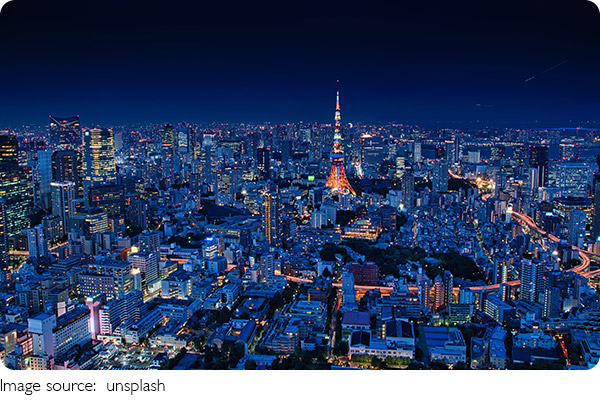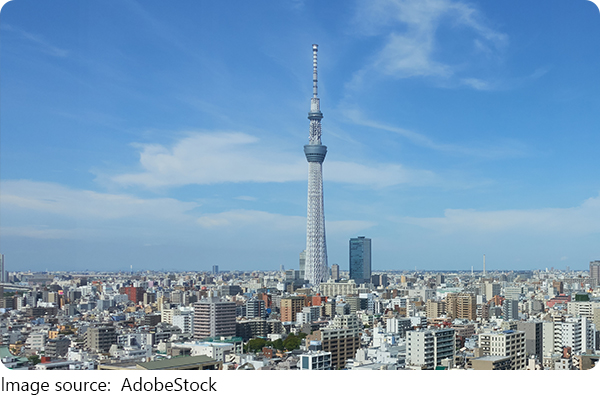Tokyo's Cityscape

Tokyo, Japan’s dazzling capital, is a city that effortlessly blends the old with the new. Whether it’s the bustling neon-lit streets, ancient shrines, or futuristic skyscrapers, Tokyo offers endless possibilities for travelers.
In this detailed guide, we’ll walk you through Tokyo’s top attractions, the best times to visit, transportation tips, and all the essential info you need to make your visit unforgettable.
How to Spend 5 Days in TOKYO - Japan Travel Itinerary
Video by Inaka Adventure
Exploring Tokyo’s Iconic Areas
1. Shibuya: The Heart of Tokyo
Shibuya is famous for its lively atmosphere, with its iconic crossing being one of the busiest pedestrian crossings in the world. Here, we can experience the energy of Tokyo's youth culture, vibrant shopping centers, and great dining spots.
Shibuya Crossing: It’s free to watch the famous crossing, and it's best to visit at night when the lights shine brightest. It’s located near the Shibuya Station.
Shibuya Scramble Square: A fantastic spot for panoramic views of the city. Entry to the observation deck costs about $7.
Best Time to Visit: Shibuya is lively year-round, but visiting in the evening will give you the full Shibuya experience with the neon lights.
Getting There: The easiest way to reach Shibuya is by taking the JR Yamanote Line, which stops directly at Shibuya Station.
2. Shinjuku: Skyscrapers and Nightlife
Shinjuku is the perfect place for those who want to experience Tokyo's skyscrapers, vibrant nightlife, and shopping. The area is known for its entertainment districts and also offers a peaceful escape in the form of Shinjuku Gyoen National Garden.
Tokyo Metropolitan Government Building: Visit the observation deck for free! It’s open from 9:30 AM to 11:00 PM, offering great views of the city.
Omoide Yokocho: For a taste of Tokyo’s traditional eateries, this alley in Shinjuku is full of small yakitori (grilled chicken) restaurants.
Best Time to Visit: Shinjuku is great for evening visits, especially for those who want to explore the nightlife. Daytime is perfect for the peaceful Shinjuku Gyoen Garden.
Getting There: Shinjuku Station is accessible by the JR Yamanote Line, Marunouchi Line, and more.
3. Asakusa: A Journey Back in Time
Asakusa offers a glimpse of old Tokyo. The Senso-ji Temple, one of the oldest and most famous Buddhist temples in Japan, is a must-visit.
Senso-ji Temple: Entrance is free. The temple opens at 6:00 AM and closes at 5:00 PM, but the temple grounds are open all day. The nearby Nakamise Street is lined with traditional shops selling souvenirs and snacks.
Tokyo Skytree: If you want stunning views of the city, visit Tokyo Skytree, just a short walk from Asakusa. Tickets range from $14 to $21 depending on the observation level.
Best Time to Visit: Early mornings are the best for avoiding the crowds at Senso-ji. The temple is especially beautiful during cherry blossom season (late March to early April).
Getting There: Asakusa Station is connected by the Tokyo Metro Ginza Line, Asakusa Line, and Tobu Skytree Line.
Practical Tips for Navigating Tokyo
Transportation TipsTokyo’s public transport system is efficient and easy to navigate, making it simple for travelers to explore the city. Here are some tips:
Suica/Pasmo Cards: Get a Suica or Pasmo card upon arrival. These rechargeable cards allow you to easily pay for trains, subways, and even purchases at convenience stores.
Tokyo Metro: The Tokyo Metro system has a detailed map in both Japanese and English. A day pass costs around $5, allowing unlimited rides on the metro.
JR Yamanote Line: This loop line is great for travelers, as it connects key areas like Shibuya, Shinjuku, and Harajuku.
Best Time to Visit
Tokyo is a great destination year-round, but there are certain periods that stand out:
Spring (March to May): The cherry blossoms are in full bloom, making it an ideal time to visit. Many parks, such as Ueno Park and Shinjuku Gyoen, host cherry blossom festivals.
Autumn (October to November): Tokyo’s parks turn vibrant shades of red and gold, offering beautiful autumn scenery.
Summer (June to August): Though it’s hot and humid, summer in Tokyo brings lively festivals like the Sumida River Fireworks Festival.
Tips: If you're traveling in summer, stay hydrated and wear light clothing, as Tokyo can get quite hot.
Where to Stay
Tokyo offers a wide variety of accommodations:
Luxury: If you're looking for a luxurious experience, consider staying in the Shinjuku or Shibuya area, where you'll have access to both upscale hotels and convenient transport.
Budget: Capsule hotels in districtslike Akihabara or Ueno offer affordable and unique lodging options. Prices start at around $15 to $30 per night.
Traditional: For a more cultural experience, try staying at a ryokan (traditional inn) or a guesthouse in Asakusa.
Must-Try Foods in Tokyo
Tokyo is a food lover’s paradise. Here’s what we recommend:
Sushi: Tsukiji Outer Market is the place to go for fresh sushi.A meal can cost between $12 and $22.
Ramen: Ichiryu in Roppongi serves excellent ramen, with a bowl costing around $7 to $10.
Street Food: Try takoyaki (octopus balls) and okonomiyaki (savory pancakes) at street vendors, especially in areas like Harajuku.

Final Thoughts: Tokyo Awaits You!
Tokyo is a city like no other, offering a rich blend of old traditions and futuristic innovations. With our detailed guide, we hope you feel ready to explore Tokyo’s diverse neighborhoods, temples, food, and culture. Whether it’s your first time visiting or you’re returning for another adventure, Tokyo promises to keep you captivated at every turn.
Don’t forget to share your adventures with us, Lykkers! Stay safe and enjoy exploring Tokyo’s wonders.

 · Travel Team
· Travel Team